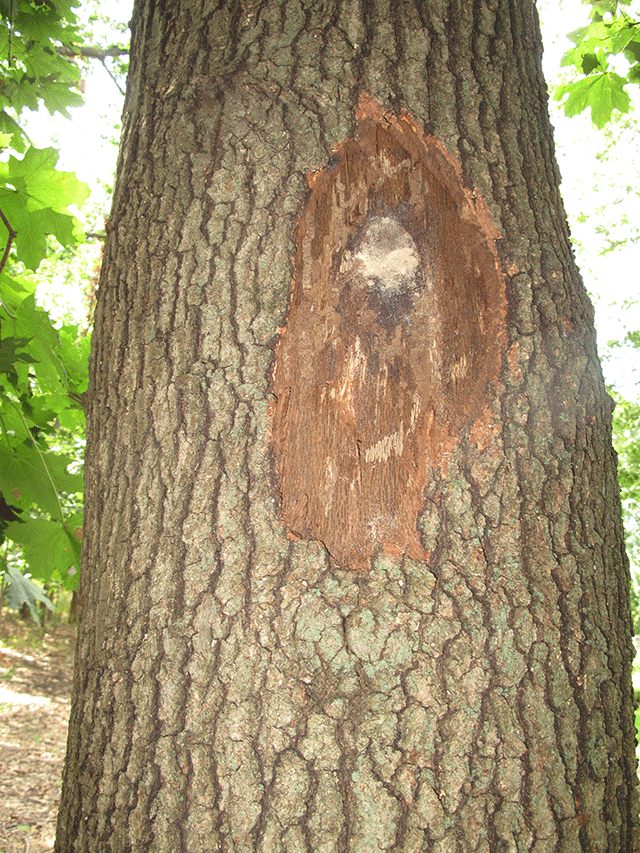Oak wilt
Information about oak wilt, a fungal disease caused by Bretziella fagacearum that can kill oak trees.
Overview
- Invasive — origin unknown.
- Oak wilt is an introduced species to Ontario.
- This fungus grows on the outer sapwood of oak trees, restricting water and nutrient flow through the tree.
- Found in Canada for the first time in 2023, in the Niagara Falls area of Southern Ontario.
- Also detected in the Township of Springwater, near Barrie, and in Niagara on the Lake. It may be present in other parts of Southern Ontario.
“Invasive” refers to a species that has moved outside of its native habitat and threatens the new environment, economy or society by disrupting local ecosystems.
Host species
Oak wilt affects all oak species, but the red oak group is most susceptible.
Characteristics and life cycle
- Oak wilt can be spread by beetles or through connected tree roots.
- Fungal mats develop on tree stems in spring and fall and spores can move throughout the tree to the roots. It can persist in the roots after the tree dies and infect adjacent oak trees.
- Sap beetles are attracted to the fungal mats to feed.
- Spores from the mats stick to the beetles and are moved to wounds of healthy trees.
Symptoms and damage
- Leaves wilt or discolour, starting at the top of the tree. Leaf colour change starts at the leaf tip and moves inward towards the base.
- Leaves may drop prematurely in mid to late summer.
- A black stain forms in the sapwood of the tree.
- White, grey or black fungal mats form just under the bark that may smell fruity.
- Trunk and large branches may develop bark cracks as the fungal spore mat pushes outward.
- Red oaks can die within 2 to 12 months of infection.
Control measures
You can help prevent oak wilt spread by:
- Sourcing and using firewood locally.
- Not pruning or wounding oaks from the beginning of April to the end of July, considered the high risk period. Ideally you should not prune or wound oaks between April and November, when the sap beetles that spread the disease are active.
- Painting any wounds that occur during the high risk period.
- Reporting infected trees to the Canadian Food Inspection Agency by emailing OakWiltReportingOntario-Fletrissementduchene@inspection.gc.ca.
To contain infestations:
- remove and chip or burn infested trees, including stumps, or bury logs
- break root connections with nearby oak trees
Updated: September 07, 2023
Published: August 30, 2023

